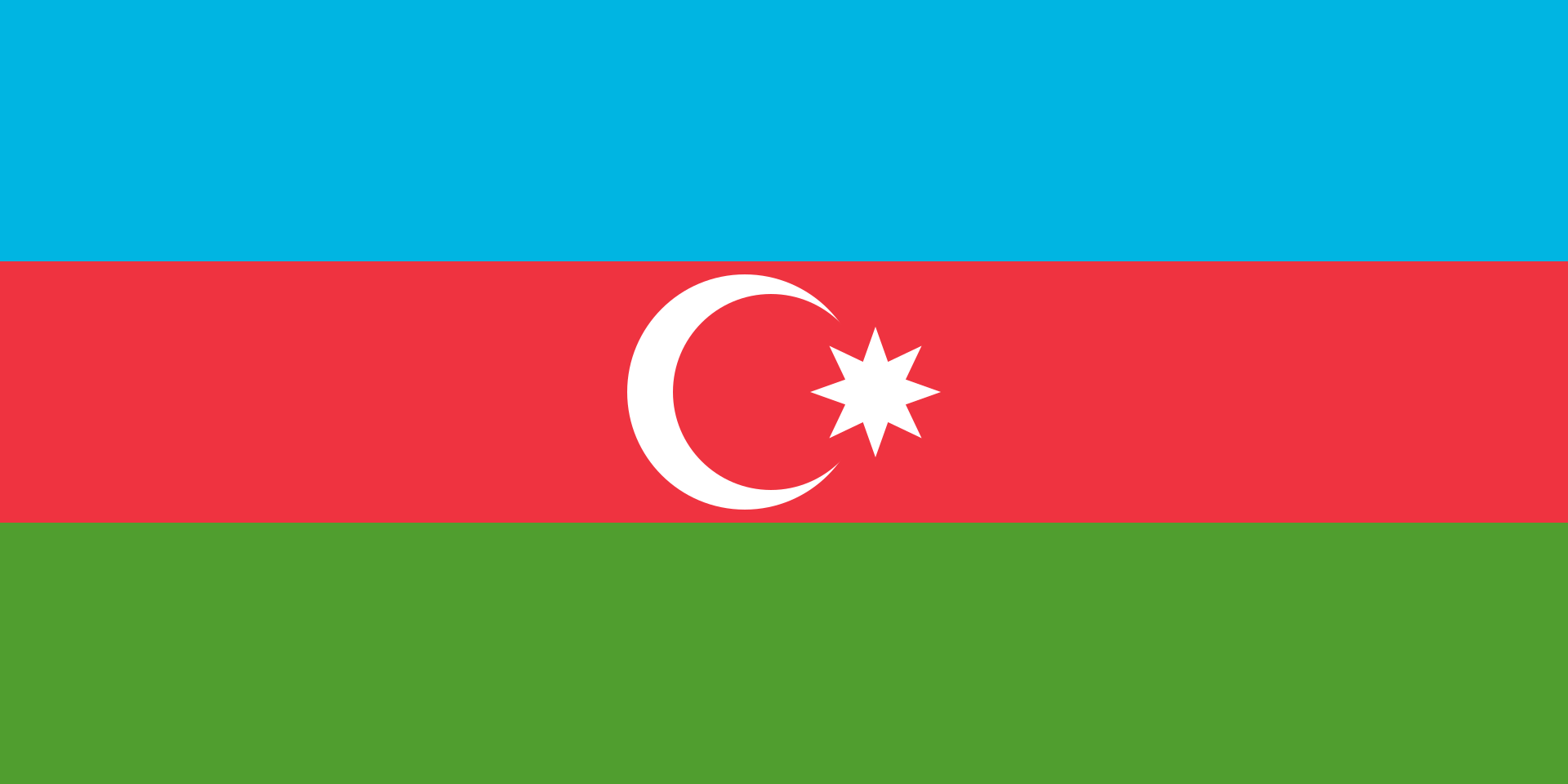The flag of Azerbaijan features three horizontal stripes: blue on the top, red in the middle, and green at the bottom. In the center of the red stripe, there is a white crescent and an eight-pointed star.
- Blue represents the Turkic heritage of the Azerbaijani people.
- Red symbolizes progress and modernization.
- Green reflects the nation’s Islamic heritage.
The white crescent and eight-pointed star are symbols of Islam and the eight Turkic peoples, respectively. Adopted in 1918 and reintroduced in 1991 after Azerbaijan regained independence, the flag embodies the country’s cultural roots, aspirations, and national identity.

Discover the Land of Fire: Top Things to Do in Azerbaijan
Azerbaijan, often called the “Land of Fire,” is a fascinating blend of ancient history, diverse landscapes, and modern development. Below are some ideas for what to see and do while visiting this unique country.
1. Explore Baku
Old City (Icheri Sheher)
- UNESCO World Heritage Site: Wander through the narrow, winding streets to see historic mosques, caravanserais, and medieval buildings.
- Maiden Tower (Qız Qalası): One of the most iconic landmarks in Azerbaijan, offering panoramic views of the city and the Caspian Sea from the top.
- Palace of the Shirvanshahs: A 15th-century palace complex with courtyards, a mosque, a mausoleum, and intricate stonework.
Modern Baku
- Flame Towers: The futuristic trio of skyscrapers that light up each night with flickering LED displays resembling fire.
- Baku Boulevard (Seaside Promenade): Stroll along the Caspian waterfront. You’ll find parks, cafes, the Baku Eye (Ferris wheel), and the distinctive Crystal Hall.
- Heydar Aliyev Center: Designed by renowned architect Zaha Hadid, it features sweeping curves and hosts exhibitions, concerts, and cultural events.
- Fountains Square & Nizami Street: Popular pedestrian areas for shopping, dining, and people-watching.
2. Discover Historical and Natural Sites Outside Baku
Gobustan National Park
- Petroglyphs: Thousands of ancient rock carvings depicting people, animals, and daily life dating back 40,000 years.
- Mud Volcanoes: Azerbaijan is home to nearly a third of the world’s mud volcanoes; take a short drive from Gobustan to experience the bubbling volcanic mud.
Ateshgah Fire Temple
- Temple of Eternal Flame: Located near Baku in Surakhany, this 17th–18th-century religious site was a place of worship for Zoroastrians, Sikhs, and Hindus.
Yanar Dag (Burning Mountain)
- Continuous Flames: This natural gas fire blazes on a hillside near Baku, giving credence to Azerbaijan’s nickname, “Land of Fire.”
3. Venture Into the Regions
Sheki
- Sheki Khan’s Palace: Known for its dazzling stained-glass windows called “shebeke.” Beautifully decorated interiors with detailed frescoes.
- Caravanserais: These traditional inns served traders traveling the Silk Road. You can even stay at some of them, which have been converted into hotels.
- Local Sweets: Try the famous Sheki halva (sweet pastry) and pakhlava.
Ganja
- Imamzadeh Complex: A religious complex with stunning turquoise domes.
- Bottle House: A quirky private residence made out of thousands of glass bottles, a local curiosity.
- Nizami Mausoleum: Dedicated to the 12th-century poet Nizami Ganjavi.
Quba & the Northeast
- Laza Village: Picturesque mountain scenery with waterfalls and hiking trails in the Caucasus Mountains.
- Krasnaya Sloboda (Red Settlement): A historic Jewish settlement, one of the largest all-Jewish towns outside of Israel.
Nakhchivan (Exclave)
- Ashabi-Kahf Caves: A pilgrimage site set in dramatic rock formations.
- Alinja Castle: Often compared to “Machu Picchu,” it offers spectacular views after a challenging hike.
4. Experience Azerbaijani Culture
Cuisine
- Plov (Pilaf): Considered the national dish, often featuring saffron rice with meats, dried fruits, and chestnuts.
- Dolma: Vegetables or vine leaves stuffed with rice and meat.
- Lyulya Kebab: Minced lamb or beef grilled on skewers.
- Piti: A hearty lamb stew cooked in a clay pot with chickpeas, chestnuts, and spices.
- Baklava & Shekerbura: Popular sweets during holidays and special occasions.
Tea Culture
- Tea is traditionally served in pear-shaped glasses (armudu) alongside jams or sweets. Visiting a local teahouse (çayxana) is a great way to experience local hospitality.
Festivals & Events
- Novruz Bayram (Spring Equinox): An ancient festival marking the new year and the coming of spring, celebrated with traditional pastries, bonfires, and family gatherings (March).
- Baku Jazz Festival: An annual festival (usually in autumn) attracting both local and international jazz musicians.
- Formula 1 Azerbaijan Grand Prix: Held in Baku, the city circuit weaves around the Old City walls and the modern coastline.
5. Practical Tips
- Language: Azerbaijani (Azeri) is the official language, but many people in Baku speak English or Russian, especially in tourist areas.
- Currency: The local currency is the Azerbaijani Manat (AZN). Credit cards are widely accepted in major cities, but it’s good to carry cash, especially when traveling to rural areas.
- Getting Around:
- Baku Metro: Efficient and inexpensive within the city.
- Taxis & Apps: Uber (or local apps like Bolt) is available in Baku. Negotiate or ensure the meter is running if you use street taxis.
- Intercity Buses & Marshrutkas: Common and cost-effective for regional travel. Trains are also an option, though slower.
- Weather & Best Time to Visit:
- Spring (April–June) and Autumn (September–October) generally offer pleasant weather and fewer tourists.
- Summers can be hot and humid in Baku, while winters can be cold, especially in the mountains.
Conclusion
Azerbaijan’s contrasts—ancient Silk Road heritage, Soviet-era remnants, and modern architectural marvels—make it a destination worth exploring. From the cosmopolitan charm of Baku’s waterfront to the historical towns and breathtaking mountain vistas, there’s something for every traveler. Embrace the local culture, try the traditional cuisine, and enjoy the hospitality as you explore the “Land of Fire.”